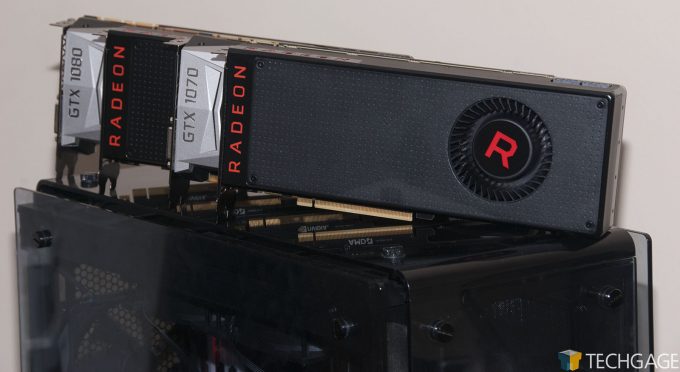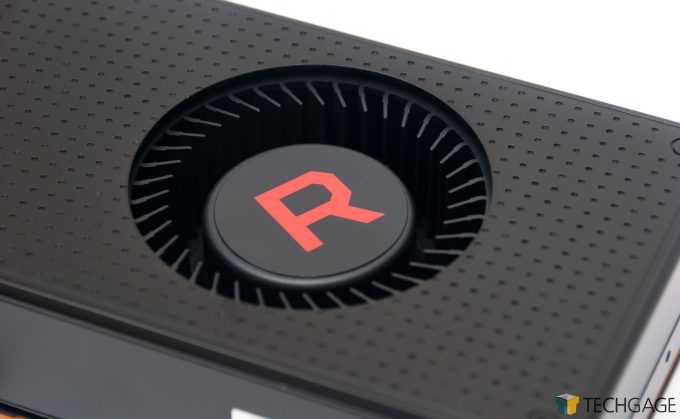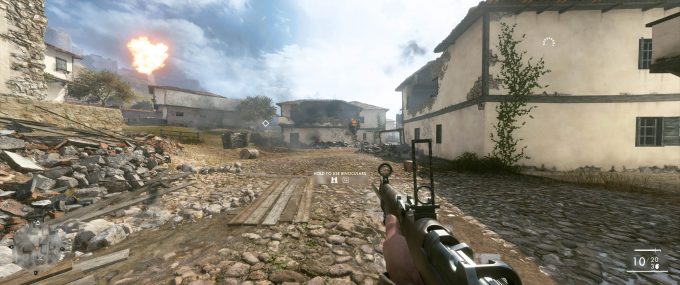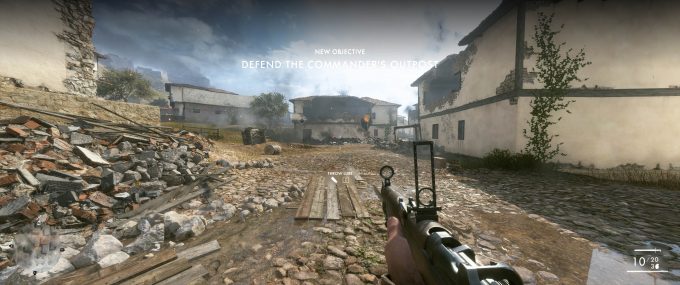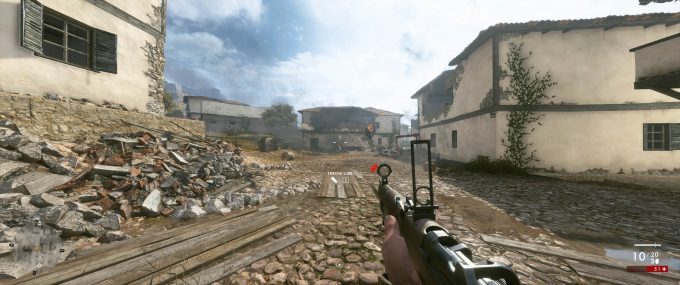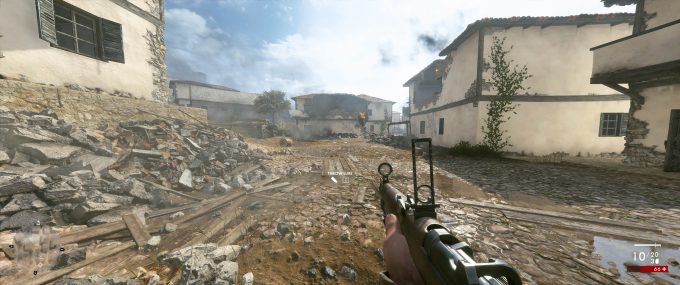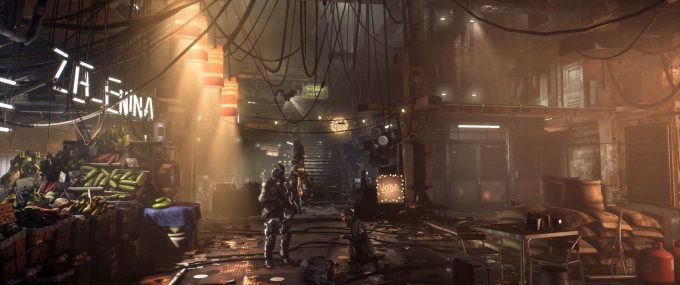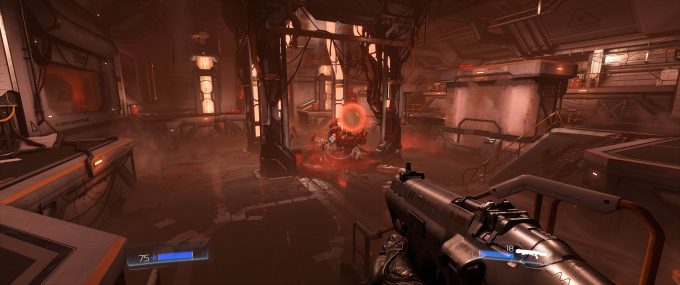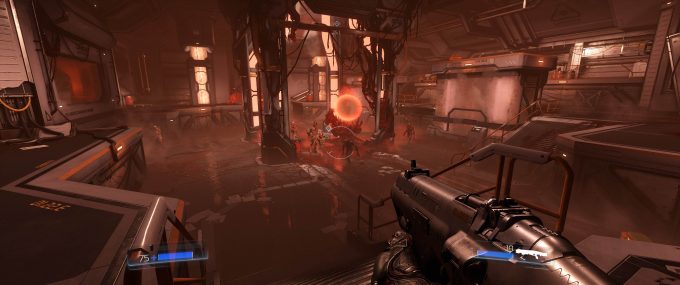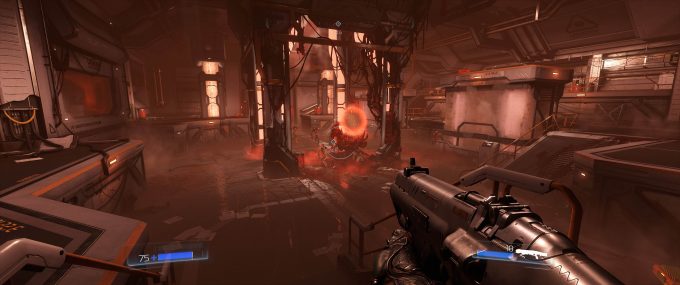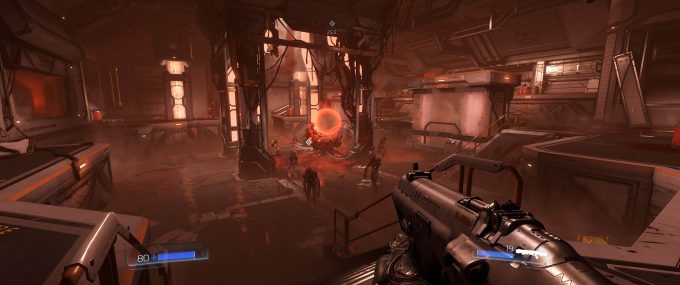- Qualcomm Launches Snapdragon 4 Gen 2 Mobile Platform
- AMD Launches Ryzen PRO 7000 Series Mobile & Desktop Platform
- Intel Launches Sleek Single-Slot Arc Pro A60 Workstation Graphics Card
- NVIDIA Announces Latest Ada Lovelace Additions: GeForce RTX 4060 Ti & RTX 4060
- Maxon Redshift With AMD Radeon GPU Rendering Support Now Available
AMD Radeon RX Vega 64 & 56 Best Playable Settings At 4K & Ultrawide

We’ve taken a look at AMD’s latest top-end Radeon in workstation and compute scenarios, and now, the attention is turned to gaming. In this Vega review follow-up, we’re going to look at the “Best Playable” settings for both the Vega 64 and GTX 1080 at 4K, as well as ultrawide, adding Vega 56 and GTX 1070 to the mix.
Page 1 – Best Playable @ 3440×1440 (Page 1) – RX Vega 64 & 56, GTX 1080 & 1070
There’s nothing I love more than working hard on content that revolves around almost impossible-to-purchase products, so it’s with great pleasure that I introduce my “Best Playable” look at AMD’s latest Radeon cards, the RX Vega 64, and RX Vega 56.
As has become the norm, I’m taking a look at these higher-end cards at two de facto high-end resolutions: 4K, and 3440×1440 (ultrawide). But I feel compelled to note that just because I am testing at 4K, it doesn’t mean I endorse it. There’s no such thing as a “future-proofed” 4K graphics card, and if 4K was my goal personally, none of the GPUs in this article would have a chance of making it into my PC.
To reduce the bluntness a bit, 4K isn’t awful on these GPUs, but they’re not for you if you’re not a fan of having to tweak a lot to get playable framerates. And by playable, I mean ~45 FPS, which, you might notice, is not 60 FPS. Ultimately, 4K is so punishing that I had to concede and convince myself to be happy with 45-50 as a Best Playable average for this resolution.
I’ve updated the table below to reflect the latest Radeons, to give you a simple way of gauging performance for a certain GPU at a certain resolution. You’ll note that not a single GPU in the current-gen lineup gets better than a “Great” at 4K, and that’s just because it’s that hardcore a resolution. Tying into that, what about ultrawide? Well, thanks to the dramatically reduced workload demands of 3440×1440 versus 4K, the “Good” rating for Vega 64 transforms into “Great”.
| 1080p | 1440p | 3440×1440 | 4K | |
| TITAN Xp | Overkill | Overkill | Excellent | Great |
| GeForce GTX 1080 Ti | Overkill | Overkill | Excellent | Great |
| TITAN X (Pascal) | Overkill | Overkill | Excellent | Great |
| GeForce GTX 1080 | Overkill | Excellent | Great | Good |
| Radeon RX Vega 64 | Overkill | Excellent | Great | Good |
| Radeon RX Vega 56 | Excellent | Great | Good | Poor |
| GeForce GTX 1070 | Excellent | Great | Good | Poor |
| Radeon RX 580 | Great | Good | Poor | Poor |
| GeForce GTX 1060 | Great | Good | Poor | Poor |
| Radeon RX 570 | Great | Good | Poor | Poor |
| GeForce GTX 1050 Ti | Good | Poor | Poor | Poor |
| Radeon RX 560 | Good | Poor | Poor | Poor |
| GeForce GTX 1050 | Poor | Poor | Poor | Poor |
| Radeon RX 550 | Poor | Poor | Poor | Poor |
| Overkill: 60 FPS? More like 100 FPS. As future-proofed as it gets. Excellent: Surpass 60 FPS at high quality settings with ease. Great: Hit 60 FPS with high quality settings. Good: Nothing too impressive; it gets the job done (60 FPS will require tweaking). Poor: Expect real headaches from the awful performance. Note that this chart does not take into account 60Hz+ goals. |
||||
If time were infinite, I would have added 1440p to this testing, but alas, there’s so much more testing to be done. With this article posted, I’ll be moving onto testing the Vega GPUs for our regular apples-to-apples test suite, which will include 4K, ultrawide, as well as 1440p (and probably 1080p for the Vega 56).
Before jumping into the results, I do have some more preamble, because I want to make sure nothing is confusing. As mentioned above, 60 FPS is normally the goal with these articles, but 4K is just too brutal a resolution to expect that kind of framerate out of these GPUs. Bear in mind that I’m talking ~45-50 on the Vega 64 and GTX 1080. I didn’t even bother with the other two GPUs, being that they are even smaller. These top dogs are pushing it as is.
If you don’t want to look at any one of the 36 tables I painstakingly edited, know that Vega 64 is great for ultrawide, and good for 4K. Vega 56 is poor for 4K, but good for ultrawide. If you still want ultrawide and the Vega 56, you can get by, but your best framerates would be at a lower resolution (eg: 2560×1080).
If you think it seems simple to produce these kinds of results, you’re lucky I’m not in the same room with you, else you’d have to endure an explanation of why that’s not the case. Could there be anything worse?
Take, for example, a game like Deus Ex: Mankind Divided. To find a Best Playable result, a handful of graphics settings might need to be changed, to find the best balance between performance and image quality. This game proves that simple task to be an exercise in patience. Some say Can it run Crysis?, but really, Deus Ex can’t even run maxed out on today’s highest-end systems and deliver a decent framerate. Yet, even reducing three or four settings could yield the same performance result.
I also want to stress that these benchmark results shouldn’t really be compared to one another, as I didn’t test these configurations in the same manner I conduct the apples-to-apples testing. That’s to say that I deviate from the usual path from run to run; each set of results are to be treated independently. The goal is to show you which card can deliver the best blend of IQ and FPS.
Of the six games included here, three are DX11, two are DX12, and one is Vulkan. Because there are 36 tables in this article, I’ve spread 3440×1440 testing across the first two pages, and dedicate the final one for 4K testing on the Vega 64 and GTX 1080 exclusively.
Note: These results are not ordered by performance, but rather in the order of RX Vega 64, GTX 1080, Vega 56, and GTX 1070. It’s one thing to arrange performance results in a graph, but it’s another when individual tables are used. That being the case, I stuck to the same order for each test so that ultimately, the results are less tedious to follow over the course of these three pages.
OK… here we go.
Battlefield 1
| Battlefield 1 (DX11) – RX Vega 64 | |||
| Minimum | Average | ||
| 50 | 57 | ||
| Resolution: | 3440 x 1440 | Texture Quality: | Ultra |
| Texture Filtering: | Ultra | Lighting Quality: | Ultra |
| Effects Quality: | Ultra | Post Process Quality: | Ultra |
| Mesh Quality: | Ultra | Terrain Quality: | Ultra |
| Undergrowth Quality: | Ultra | Antialiasing Post: | TAA |
| Ambient Occlusion: | HBAO | ||
| Battlefield 1 (DX11) – GTX 1080 | |||
| Minimum | Average | ||
| 50 | 58 | ||
| Resolution: | 3440 x 1440 | Texture Quality: | Ultra |
| Texture Filtering: | Ultra | Lighting Quality: | Ultra |
| Effects Quality: | Ultra | Post Process Quality: | Ultra |
| Mesh Quality: | Ultra | Terrain Quality: | Ultra |
| Undergrowth Quality: | Ultra | Antialiasing Post: | TAA |
| Ambient Occlusion: | HBAO | ||
| Battlefield 1 (DX11) – RX Vega 56 | |||
| Minimum | Average | ||
| 56 | 64 | ||
| Resolution: | 3440 x 1440 | Texture Quality: | Ultra |
| Texture Filtering: | Ultra | Lighting Quality: | Ultra |
| Effects Quality: | Ultra | Post Process Quality: | High |
| Mesh Quality: | Ultra | Terrain Quality: | Ultra |
| Undergrowth Quality: | High | Antialiasing Post: | TAA |
| Ambient Occlusion: | SSAO | ||
| Battlefield 1 (DX11) – GTX 1070 | |||
| Minimum | Average | ||
| 51 | 58 | ||
| Resolution: | 3440 x 1440 | Texture Quality: | Ultra |
| Texture Filtering: | Ultra | Lighting Quality: | Ultra |
| Effects Quality: | Ultra | Post Process Quality: | High |
| Mesh Quality: | Ultra | Terrain Quality: | Ultra |
| Undergrowth Quality: | High | Antialiasing Post: | TAA |
| Ambient Occlusion: | HBAO | ||
Both the RX Vega 64 and GTX 1080 just make the cut-off for being able to max out the graphics detail in Battlefield 1. With all settings cranked to max, both cards deliver about 58 FPS, and surprisingly (or coincidentally in this run), both scored the same minimum FPS, too.
The other cards kicked off what will become a theme: both perform well in comparison to their respective bigger siblings, but sacrifices still need to be made. Both the RX Vega 56 and GTX 1070 had to see a couple of details dropped from Ultra to High. In this particular instance, I dropped the Vega 56’s AO to SSAO, which gave it a bit of a performance boost, while the GTX 1080 could retain HBAO and still rub really close against 60 FPS.
Deus Ex: Mankind Divided
| Deus Ex: Mankind Divided (DX12) – RX Vega 64 | |||
| Minimum | Average | ||
| 47 | 60 | ||
| Resolution: | 3440 x 1440 | Anti-Aliasing: | Off |
| Texture Quality: | High | Anisotropic Filter: | 16x |
| Shadow Quality: | High | Ambient Occlusion: | Very High |
| CH Shadows: | On | Parallax Occlusion: | On |
| Depth of Field: | On | Level of Detail: | High |
| Volumetric Lighting | On | SS Reflections: | On |
| Temporal AA: | On | Motion Blur: | Off |
| Sharpen: | Off | Bloom: | On |
| Lens Flares: | Off | Cloth Physics: | On |
| Subsurface Scattering: | Off | Chromatic Aberration: | On |
| Tessellation: | On | ||
| Deus Ex: Mankind Divided (DX12) – GTX 1080 | |||
| Minimum | Average | ||
| 47 | 58 | ||
| Resolution: | 3440 x 1440 | Anti-Aliasing: | Off |
| Texture Quality: | High | Anisotropic Filter: | 16x |
| Shadow Quality: | High | Ambient Occlusion: | Very High |
| CH Shadows: | On | Parallax Occlusion: | On |
| Depth of Field: | On | Level of Detail: | High |
| Volumetric Lighting | On | SS Reflections: | On |
| Temporal AA: | On | Motion Blur: | Off |
| Sharpen: | Off | Bloom: | On |
| Lens Flares: | Off | Cloth Physics: | On |
| Subsurface Scattering: | Off | Chromatic Aberration: | On |
| Tessellation: | On | ||
| Deus Ex: Mankind Divided (DX12) – RX Vega 56 | |||
| Minimum | Average | ||
| 50 | 60 | ||
| Resolution: | 3440 x 1440 | Anti-Aliasing: | Off |
| Texture Quality: | High | Anisotropic Filter: | 16x |
| Shadow Quality: | High | Ambient Occlusion: | Very High |
| CH Shadows: | On | Parallax Occlusion: | On |
| Depth of Field: | Off | Level of Detail: | High |
| Volumetric Lighting | On | SS Reflections: | Off |
| Temporal AA: | On | Motion Blur: | Off |
| Sharpen: | Off | Bloom: | On |
| Lens Flares: | Off | Cloth Physics: | On |
| Subsurface Scattering: | Off | Chromatic Aberration: | On |
| Tessellation: | On | ||
| Deus Ex: Mankind Divided (DX12) – GTX 1070 | |||
| Minimum | Average | ||
| 44 | 53 | ||
| Resolution: | 3440 x 1440 | Anti-Aliasing: | Off |
| Texture Quality: | High | Anisotropic Filter: | 16x |
| Shadow Quality: | High | Ambient Occlusion: | Very High |
| CH Shadows: | On | Parallax Occlusion: | On |
| Depth of Field: | Off | Level of Detail: | High |
| Volumetric Lighting | On | SS Reflections: | Off |
| Temporal AA: | On | Motion Blur: | Off |
| Sharpen: | Off | Bloom: | On |
| Lens Flares: | Off | Cloth Physics: | On |
| Subsurface Scattering: | Off | Chromatic Aberration: | On |
| Tessellation: | On | ||
Yet again, the Vega 64 and GTX 1080 bumped heads, delivering the same level of performance at the same (high) detail levels. As I mentioned before, Deus Ex: MD is brutal even on top-end hardware, so it’s a game that probably won’t leave our testing suite for a while.
The average FPS difference between the GTX 1080 and Vega 64 was 2, a number that extends to a much greater 7 when the GTX 1070 and Vega 56 are compared. Again, the same settings were used between the two, but AMD’s prowess for DX12 apparently gave it an extra boost here. Normally, 53 FPS is not ideal, but increasing the performance at all without degrading the IQ any significant way was impossible, so 53 FPS it is.
DOOM
| DOOM (Vulkan) – RX Vega 64 | |||
| Minimum | Average | ||
| 57 | 90 | ||
| Resolution | 3440×1440 | Anti-aliasing | TSSAA (8TX) |
| Lights Quality | Ultra | Shadows Quality | Nightmare |
| Player Self-Shadow | Yes | Directional Occlusion | High |
| Decal Quality | Ultra | Decal Filtering | 16x |
| Virtual Texture Size | Nightmare | Reflections Quality | Ultra |
| Particles Quality | Ultra | Compute Shaders | Yes |
| Motion Blur | Ultra | Depth of Field | Yes |
| Depth of Field AA | Yes | HDR Bloom | Yes |
| Lens Flare | Yes | Lens Dirt | Yes |
| Sharpening | 2.0 | Film Grain | 1.0 |
| UI Opacity | 100% | ||
| DOOM (Vulkan) – GTX 1080 | |||
| Minimum | Average | ||
| 31 | 77 | ||
| Resolution | 3440×1440 | Anti-aliasing | TSSAA (8TX) |
| Lights Quality | Ultra | Shadows Quality | Nightmare |
| Player Self-Shadow | Yes | Directional Occlusion | High |
| Decal Quality | Ultra | Decal Filtering | 16x |
| Virtual Texture Size | Nightmare | Reflections Quality | Ultra |
| Particles Quality | Ultra | Compute Shaders | Yes |
| Motion Blur | Ultra | Depth of Field | Yes |
| Depth of Field AA | Yes | HDR Bloom | Yes |
| Lens Flare | Yes | Lens Dirt | Yes |
| Sharpening | 2.0 | Film Grain | 1.0 |
| UI Opacity | 100% | ||
| DOOM (Vulkan) – RX Vega 56 | |||
| Minimum | Average | ||
| 51 | 78 | ||
| Resolution | 3440×1440 | Anti-aliasing | TSSAA (8TX) |
| Lights Quality | Ultra | Shadows Quality | Nightmare |
| Player Self-Shadow | Yes | Directional Occlusion | High |
| Decal Quality | Ultra | Decal Filtering | 16x |
| Virtual Texture Size | Nightmare | Reflections Quality | Ultra |
| Particles Quality | Ultra | Compute Shaders | Yes |
| Motion Blur | Ultra | Depth of Field | Yes |
| Depth of Field AA | Yes | HDR Bloom | Yes |
| Lens Flare | Yes | Lens Dirt | Yes |
| Sharpening | 2.0 | Film Grain | 1.0 |
| UI Opacity | 100% | ||
| DOOM (Vulkan) – GTX 1070 | |||
| Minimum | Average | ||
| 43 | 61 | ||
| Resolution | 3440×1440 | Anti-aliasing | TSSAA (8TX) |
| Lights Quality | Ultra | Shadows Quality | Nightmare |
| Player Self-Shadow | Yes | Directional Occlusion | High |
| Decal Quality | Ultra | Decal Filtering | 16x |
| Virtual Texture Size | Nightmare | Reflections Quality | Ultra |
| Particles Quality | Ultra | Compute Shaders | Yes |
| Motion Blur | Ultra | Depth of Field | Yes |
| Depth of Field AA | Yes | HDR Bloom | Yes |
| Lens Flare | Yes | Lens Dirt | Yes |
| Sharpening | 2.0 | Film Grain | 1.0 |
| UI Opacity | 100% | ||
Deus Ex: MD might require a huge PC to deliver decent framerates (and detail levels), and DOOM is pretty much the opposite. Thanks to a very optimized engine, and one that supports Vulkan, solid DOOM performance is not hard to find. Here, all four GPUs used the exact same settings, with the lowest average FPS of the bunch belonging to the GTX 1070, at 61 FPS.
Simply put, DOOM doesn’t require a high-end PC to run well or look awesome. We’re dealing with midrange GPUs running the game on a very high resolution without much fuss.
Support our efforts! With ad revenue at an all-time low for written websites, we're relying more than ever on reader support to help us continue putting so much effort into this type of content. You can support us by becoming a Patron, or by using our Amazon shopping affiliate links listed through our articles. Thanks for your support!




